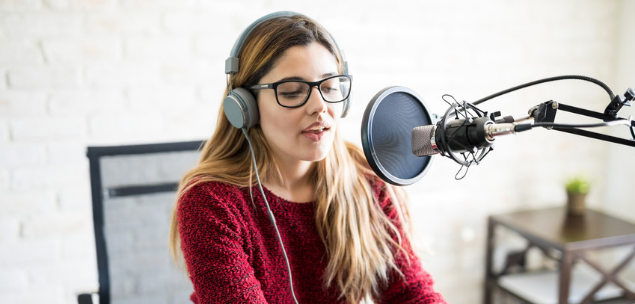It’s no secret – audio is on the rise with more Australians listening to podcasts than ever. In 2018 local audiences grew by 22%, with time spent listening increasing to over 11 hours a week.
The market is responding in a big way with an unprecedented level of acquisitions, analytics and deals announced in the past year, as well as increasing interest from consumers.
Podcasting has a reputation for being easy to do, and compared to other mediums like video, it is. Which is great news for small businesses.
But audiences are savvy and won’t listen to just anything – you’ve got to make something great to rise to the top of someone’s listening list.
Jess Bineth and Kate Montague are the founders of the Australian podcasting company Audiocraft and work with clients including Audible, NRMA, and Nova Entertainment.
In this article, they share a few things they’ve learnt along the way about making podcasts that cut through.
By: Jess Bineth and Kate Montague, founders of Audiocast
Telling stories through sound is ancient – long before we could write, or had invented the alphabet for that matter, we had words.
Today, it’s still a very powerful medium. It drives emotions and impacts the way we feel.
The very act of listening is an opt-in, active experience. When you hit play on a podcast, it feels like that voice is talking directly to you, like a phone call from a good friend.
All of this means podcasting is a great way to develop genuine relationships with people you might not otherwise easily reach, which is particularly important for small businesses.
But in this podcast saturated world, how do you capture a listener’s attention and hold on to it?
Think story
Nothing is more important than your opening – at Audiocraft we’ll sometimes spend more time crafting the first few minutes of a story than we will on the rest of the episode. You want to hook your listener early and give them a reason to keep listening.
It’s essential you then sustain their interest throughout the whole episode. A good structure creates a rhythm that moves the story along and keeps the listener engaged. We’ll work on developing a narrative arc that teases out tension and leaves space for moments of empathy.
Well defined characters – be it the host or interviewees – are also key to getting the most out of the intimacy of audio. Afterall, people connect with people, not businesses. Strong characters give the listener a point of deep connection with the story, and hopefully in turn the human experience.
Think visually
With audio, limitations are the mediums greatest strength – there are no images, which forces you to be creative and pay attention to words, sound and language. And when done well, a good piece of audio is actually quite visual.
Out in the field, we’ll use the microphone much the same way you might use a camera, capturing sound rich material so we can build a world for the ear. We treat our listener as a collaborator – we want to give them just enough audio cues for them to bring their imagination to the piece and fill in the gaps.
Once back in the studio, we’ll work carefully on the sound design to build the world of the story – we want the listener to be transported to a time and place. Sound is visceral, and when used effectively, it brings a whole other layer of connection.
Think audience
Considering the one-to-one nature of podcasting, it’s important to be specific when thinking about who your podcast is for. For small businesses, this helps in building trust and encourages listeners to connect and associate with your brand.
We often achieve this by focusing in on one person. We give her a name and almost imagine her into existence – we talk about what kind of job she has, who she hangs out with, what she does on the weekend.
The goal is for the series to be as tight as possible, so we keep her in mind throughout production and let this guide our decisions when deciding on a host for the podcast, how to script the introduction, what style of production music to use.
This also helps us build a clear marketing strategy – you’re building an audience from scratch with a podcast, so knowing where your listener is and what she’s consuming allows you to go to her and engage on her terms.
Be creative
The increased popularity of podcasts means savvier audiences and an increasingly saturated market. Spending some time refining you podcast idea and giving some love to the quality of your production will go a long way in creating a successful podcast that people will engage with.
It’s also fun to think creatively about how to best use the audio medium. We like to interrogate what stories work best in audio, what formats we can borrow from but also what new ground can we cover, and what new audio adventures can we take.
For more podcasting best practice, come and hear Audiocraft talk more about how podcasts cut through at Advertising Week APAC.

